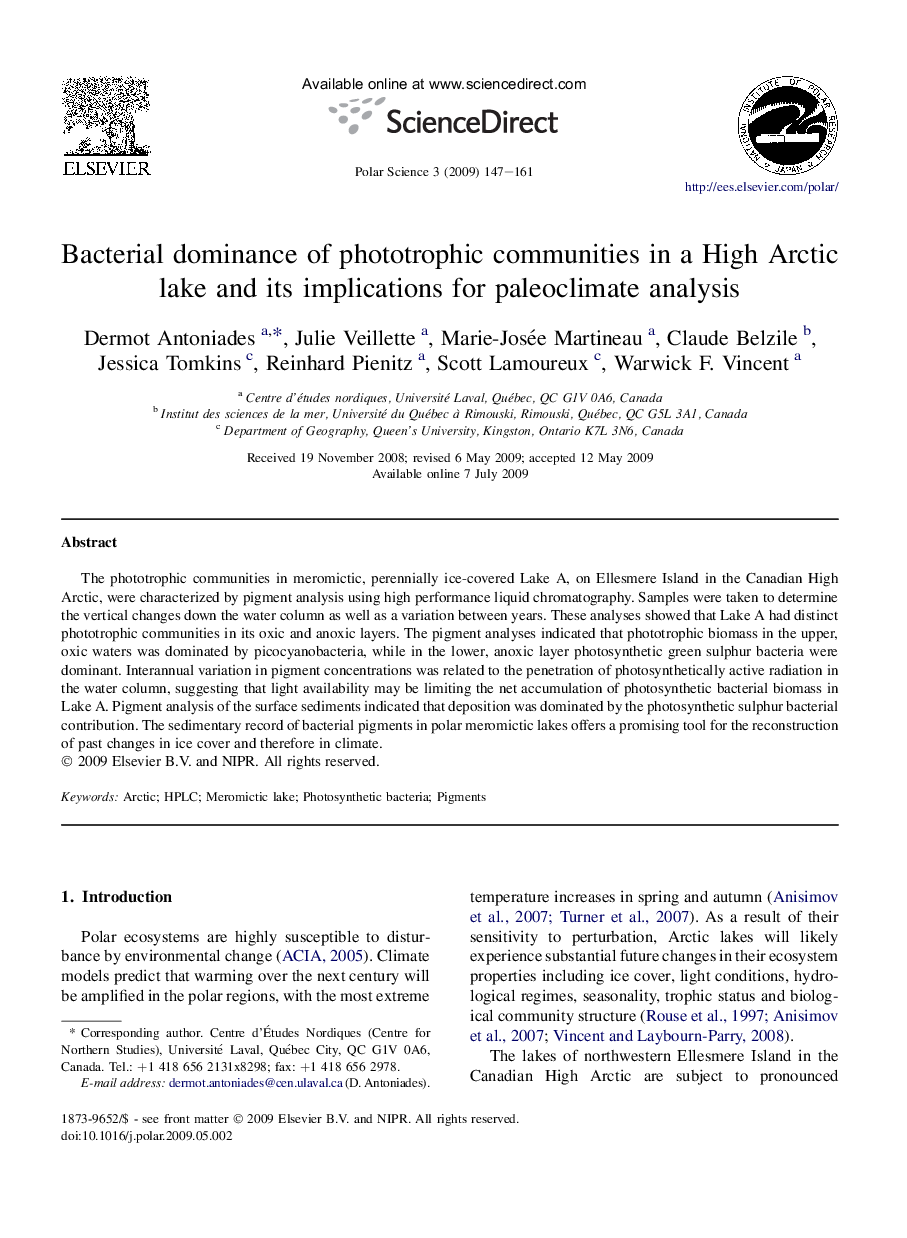| Article ID | Journal | Published Year | Pages | File Type |
|---|---|---|---|---|
| 4683428 | Polar Science | 2009 | 15 Pages |
The phototrophic communities in meromictic, perennially ice-covered Lake A, on Ellesmere Island in the Canadian High Arctic, were characterized by pigment analysis using high performance liquid chromatography. Samples were taken to determine the vertical changes down the water column as well as a variation between years. These analyses showed that Lake A had distinct phototrophic communities in its oxic and anoxic layers. The pigment analyses indicated that phototrophic biomass in the upper, oxic waters was dominated by picocyanobacteria, while in the lower, anoxic layer photosynthetic green sulphur bacteria were dominant. Interannual variation in pigment concentrations was related to the penetration of photosynthetically active radiation in the water column, suggesting that light availability may be limiting the net accumulation of photosynthetic bacterial biomass in Lake A. Pigment analysis of the surface sediments indicated that deposition was dominated by the photosynthetic sulphur bacterial contribution. The sedimentary record of bacterial pigments in polar meromictic lakes offers a promising tool for the reconstruction of past changes in ice cover and therefore in climate.
